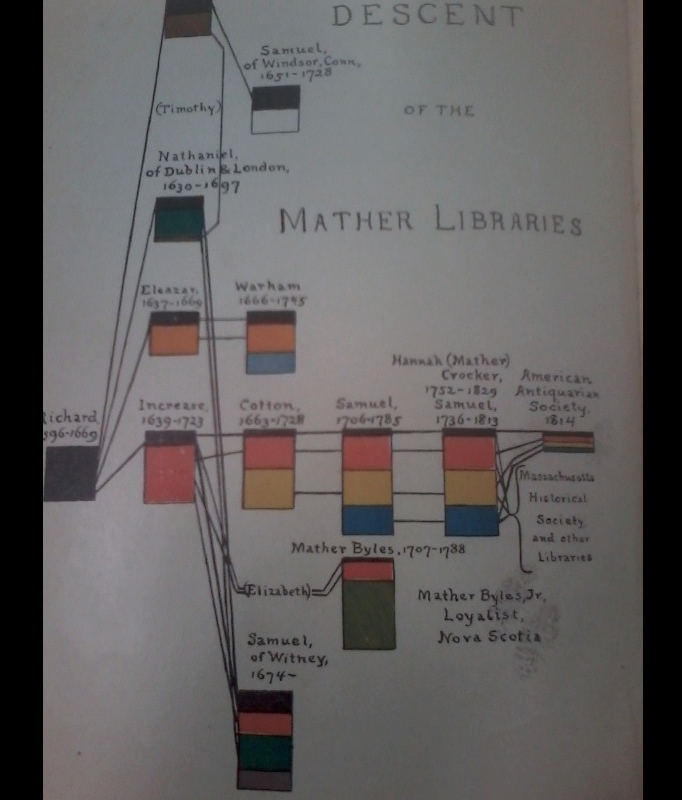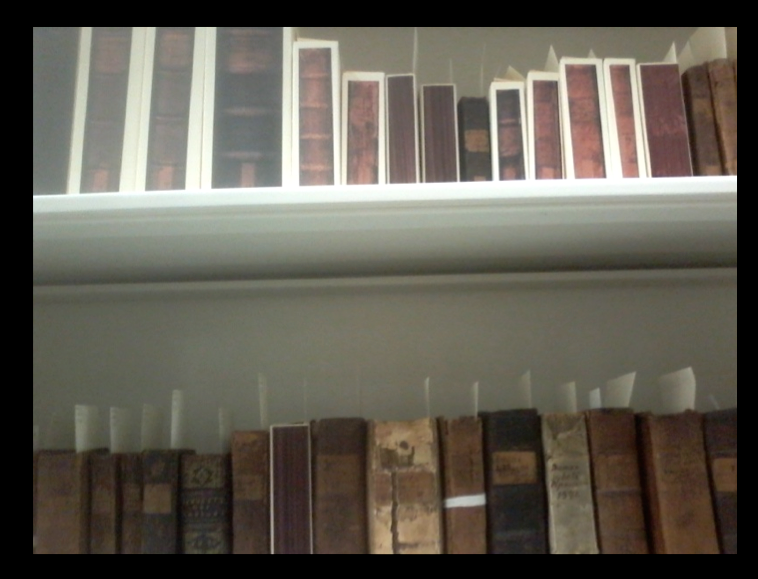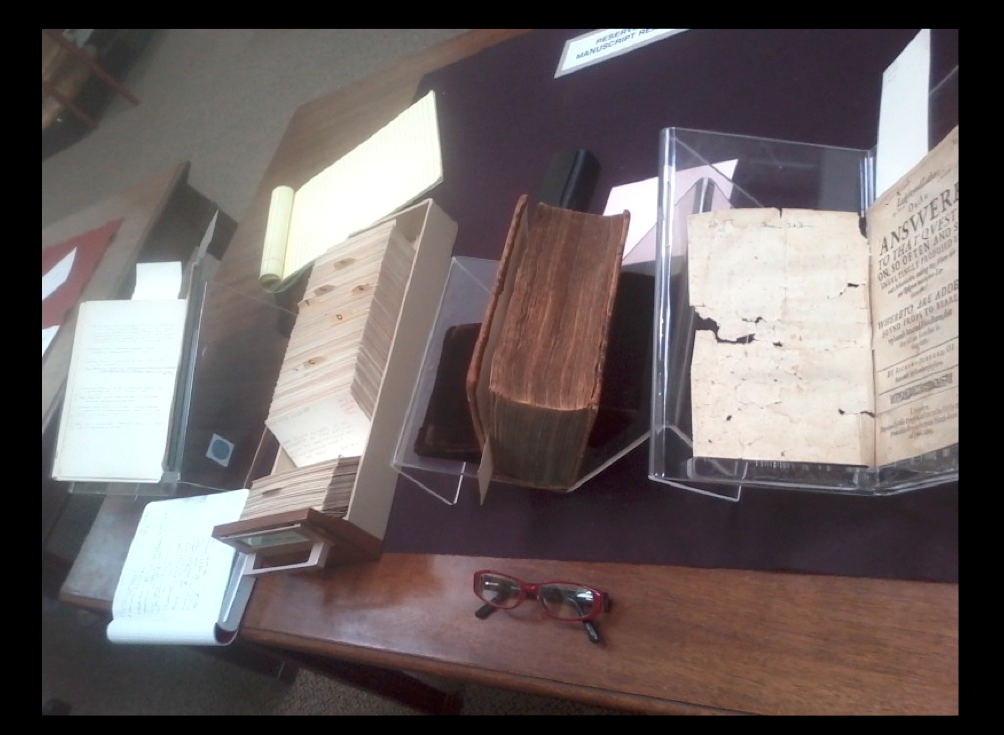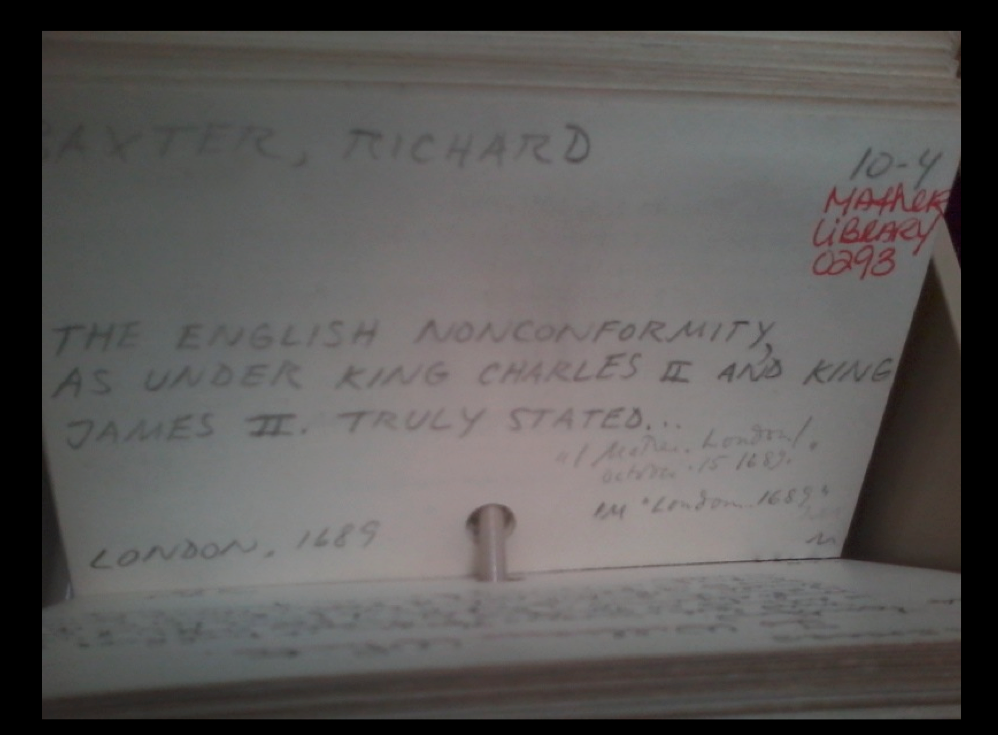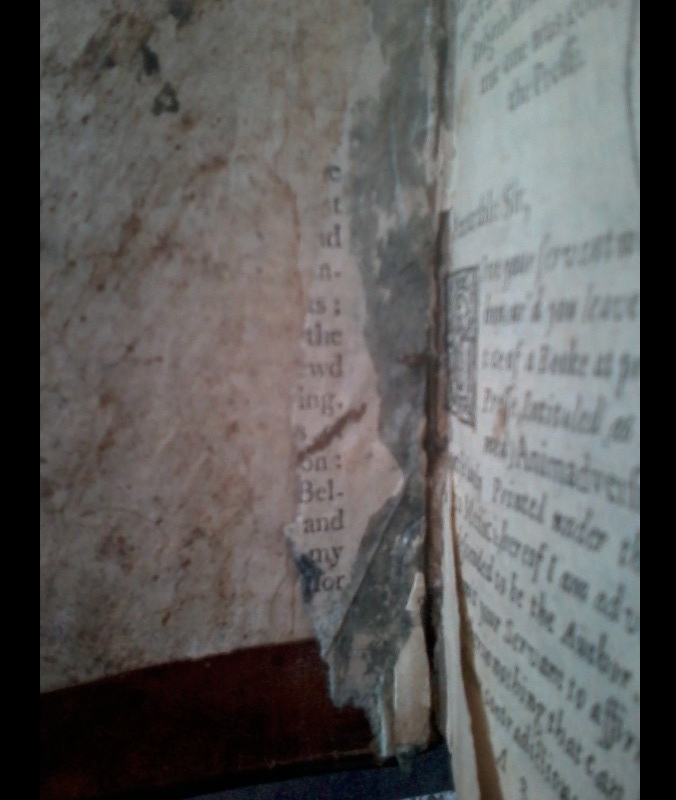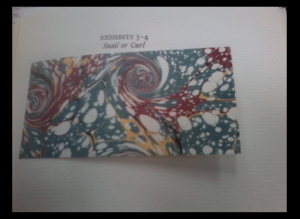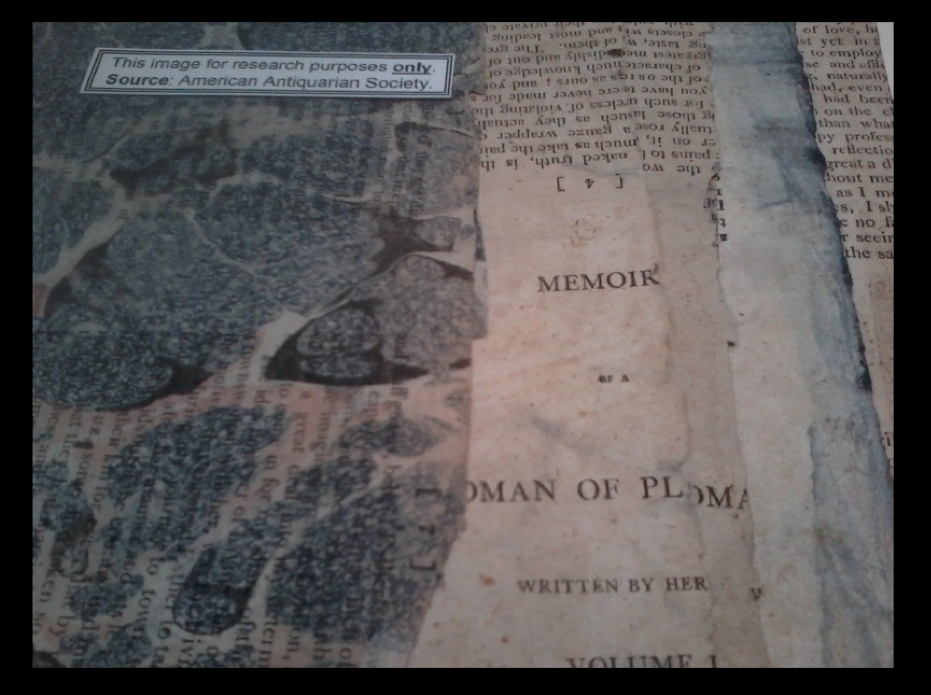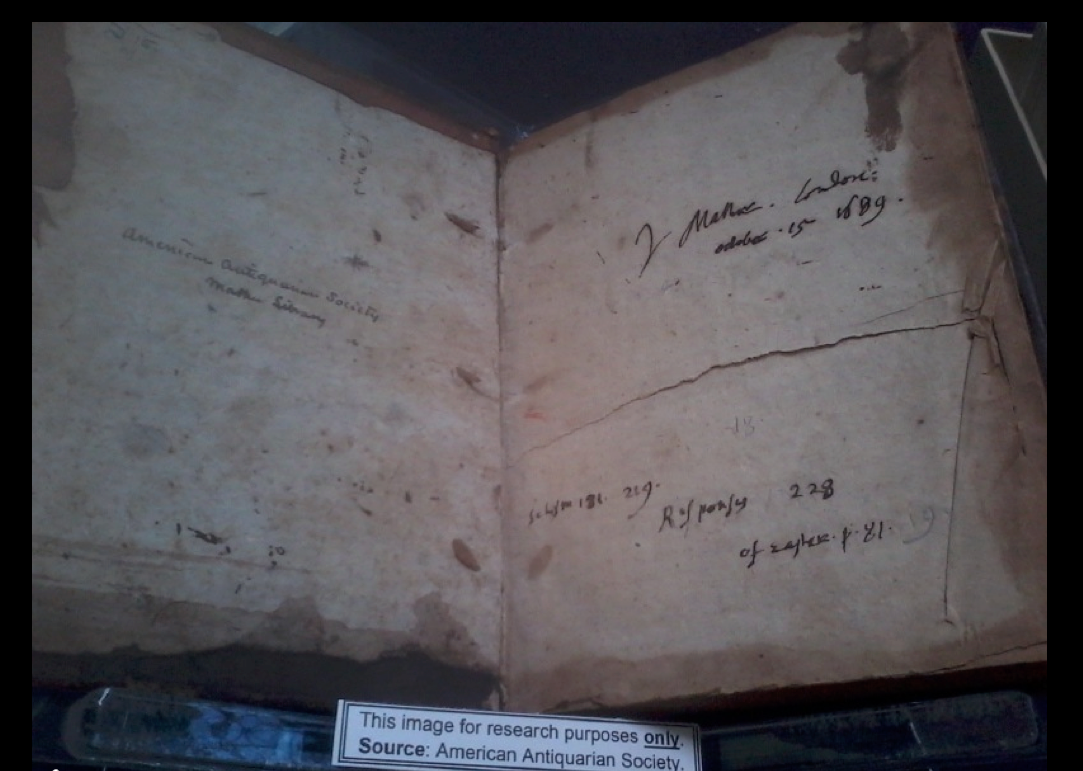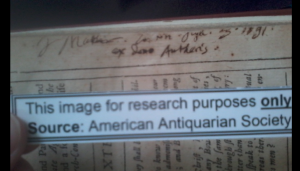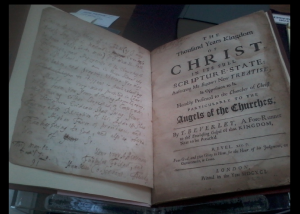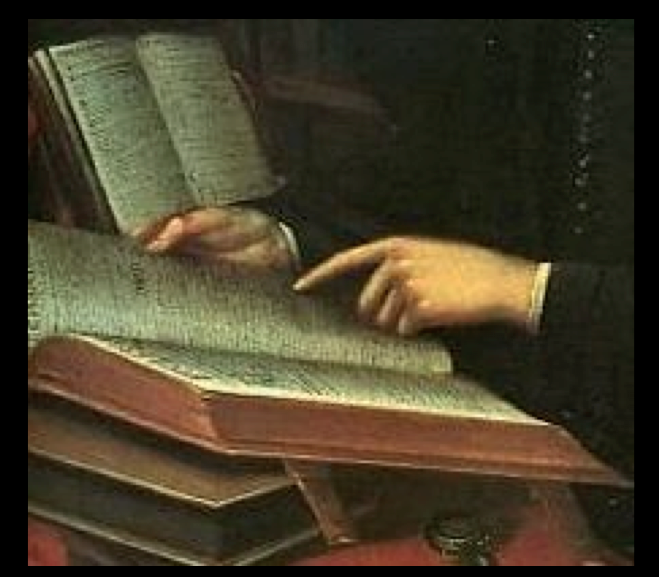(This post is a slightly edited version of the talk I gave at the Society of Early Americanists “London and the Americas, 1492-1812” conference at Kingston University, July 17-21, 2014. The presentation was part of a round table entitled “Puritan Studies in Post-Americanist Times.” I am indebted to Tom Knoles and Elizabeth Pope at the American Antiquarian Society for an ongoing series of conversations and insights about the Mather Library collection.)
Let me start by showing you just one of many reasons why the Mather Library is such a headache:
Today we are concerned with the little striped block on the far right-hand side of the chart, which represents about 1,000 volumes spanning two centuries of Mather book collecting, many sold in 1814 to Isaiah Thomas, printer and founder of the American Antiquarian Society, by Hannah Mather Crocker, Mather descendant and an antiquarian scholar in her own right. Crocker gave additional volumes to the AAS directly. When Thomas gave the bulk of this collection to the AAS, he first assessed a value for each book, which he inked inside the front cover (“50 Cts” for example), and then compiled an index of the whole, arranging it by format—folios, quartos, etc. His inventory was a boon for future book historians, notwithstanding the errors and inconsistencies, vagueness of titles and authors, nor the fact that entire volumes of multiple pamphlets and other imprints bound together were listed simple as English Tracts 1, English Tracts 2, etc.
A full bibliographic description of the collection was not attempted until almost a century later. The color plate above comes from Julius Tuttle’s checklist, published in the AAS Proceedings in 1910. Tuttle’s list is alphabetical by author, with short, sometimes incorrect titles and (most helpfully) with indication of provenance markings, such as the names former Mather owners. (“Increase Mather,” for example, or even more often, “Crescentius Mather,” as he often inscribes his name in Latin.) Tuttle’s checklist is incomplete, in part due to idiosyncrasies of shelving and record keeping over time. Tuttle’s list also excludes (for the most part) continental imprints, focusing instead on American and some English printing. And there were undoubtedly other volumes that Tuttle simply couldn’t find. Some collections of pamphlets bound together at the time of the original gift, for example, migrated through the collections. Virtually all of these composite collections were disbound, making it hard to distinguish whether or not a single title was originally part of the Mather collection. In the twentieth century, many good souls worked to fill in Tuttle’s gaps, and if you ask at the reader services desk, they will bring you—if they can locate it—an annotated offprint of the Tuttle checklist with almost forty percent more entries handwritten on interleaved inserts.
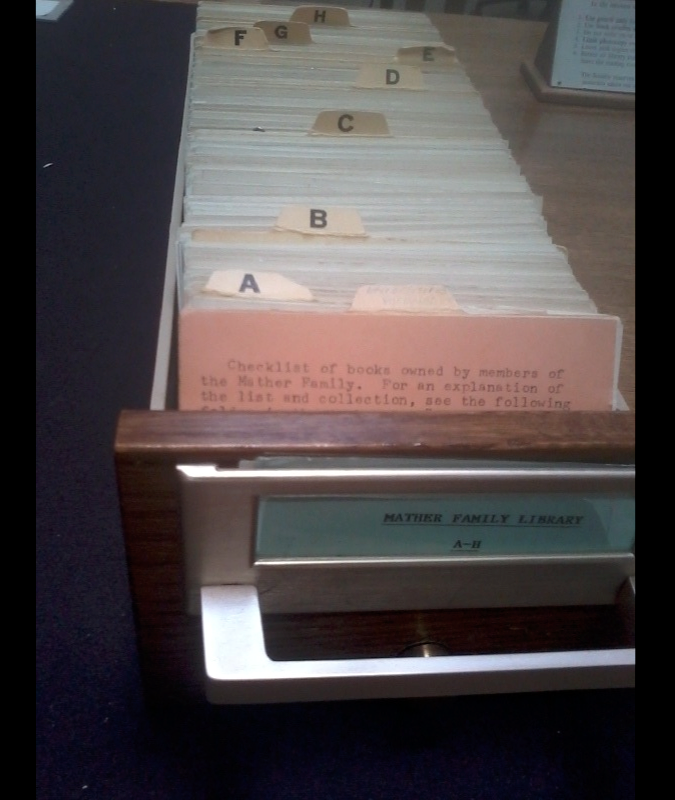
In the 1980s, head of reader services Keith Arbour compiled a card catalog which—while still incomplete—was substantially more comprehensive than the annotated Tuttle and bibliographically more precise. Again, if you ask at the desk, they will bring you out a folder of Arbour’s notes, including instructions to a woman (yet unnamed in my research) who assisted in writing out the cards in pencil. While still incomplete, the card catalog adds items not included by Tuttle, such as an eleven-volume manuscript sermon cycle on Revelations bought by Increase Mather in London in 1691. Arbour’s card catalog misses elusive continental imprints that have fallen through the cracks over two centuries of curatorial preference for American imprints.
In the Mather Library, fortunately, uncataloged volumes are relatively easy to locate. The current call number system—Mather Library 0001, Mather Library 0002, etc.—was determined by the order in which the books were on the shelves at the moment the Library decided that the old call number system (specific to the physical layout of the former library building) needed to be revised. With the new call number system, each item has a number, even if it doesn’t have a catalog record. So, in theory, if you generate a spreadsheet of the Mather Library catalog records by call number, you can simply look to see where the gaps are, and there you will find an uncatalogued book, most likely a continental imprint.
There is much more to say about retrospective conversion, the process whereby card catalogs are converted to electronic catalog records, almost always offsite, where no confirmation of bibliographic details is possible. The correction of Mather Library conversion records continues to this day. The American imprints seem to be in order now. One cataloger is just about done with cross referencing English imprints against ESTC (English Short Title Catalogue) records, and another has begun working through the continental imprints, though the many demands on her time continually interrupt progress. To date she has finished about twenty records. This process of correcting retrospective conversion creates a reliable record the essential bibliographic information: title, author, publication information, cross reference to external databases. It leaves out (for now, at least) owner’s inscriptions, reader’s marks, and other copy-specific features.
These copy-specific features, of course, are why I muck about in the Mather Library in the first place. One of my first finds in the collection, through nearly random chance, was a volume owned by Increase Mather made up of four titles by Hugh Broughton dealing with millenialist theory: bound together in a single thick but fragile volume, a mixture of printed texts and manuscript copies of printed texts, illustrations and fold outs, all heavily annotated by Increase Mather himself. I can make notes on extraordinary finds such as this—and I can catalog them in excel or zotero or whatever other software someone will undoubtedly recommend to me during Q&A—but there is no true metadata potential here until the fundamental cataloging of author, title, and publication is complete *and* until each volume is scruitinzed by very analog and clunky methods. Frankly, without major extramural resources, this work can never be done comprehensively. Only piecemeal by foolhardy enthusiasts like myself and anyone else I might interest in this Sisephean Task.
Before we get ahead of ourselves, though, we must stop to reflect that, as a collection, it is not clear what, exactly, the “Mather Library” is. We would like to think it is a glimpse of the accumulated intellectual history of multiple-generations of Mathers. And it is. But it is also impossibly idiosyncratic, as Tuttle’s chart suggests. Even if Hannah Mather Crocker’s portion was representative, which it may or may not have been, she was generous with her books. Just like others before in her family, she lent, gifted, and sold individual titles within her extensive Boston-area network. William Bentley, a Salem minister, visited the collection frequently and recorded with alarm in his diary that he found the collection “much diminished.” Does this mean, to begin with, that the Mather Library collection that Thomas snagged was, in a sense, remainders? Those titles of not enough interest to have been already carried away by 1814? Such a skew—the absence of books, we could say—might reflect not the collecting habits of the Mathers so much as the lively interests of early eighteenth-century ministers and antiquarians. Then, too, curatorial practice has preferred some imprints over others, deliberately or accidentally altering identity and meaning. The Mather Library—like all archive—is whatever we can get our hands one, whatever we can describe, whatever we can catalog. It is accidental, contingent, conjectural, murky. Just as we talk about ideal readers only to immediately complicate that notion, so, too, we might need to theorize the Ideal Mather Library and then trouble what we imagine that collection to be.
In the time remaining, I would like to show you some examples of how one might go about this project of conjecture. For the past few weeks, I’ve been looking at books owned by Increase Mather, volumes that he likely bought during his time in London from 1688 to 1692 where he was working to reinstate the colonial Charter. To make my task more manageable, I chose to focus only on the “B” section of the 1980’s Arbour card catalog, flipping through and pulling likely candidates based on handwritten indications of provenance information—a tiny “IM” penciled in the bottom right hand corner.
One goes to the archive to seek the kind of artifacts that intellectual historians dream about. For example, say you wanted to see how Increase and his son Cotton were influenced by Robert Boyle’s work. In this case, you would be very happy, finding in the collection a presentation copy from Boyle himself, as well as another copy with handwritten notes by Increase Mather indexing passages on topics like witchcraft and smallpox. These discoveries are what I call the Smoking Guns. They are incredibly wonderful and incredibly rare finds.
More often, however, you will find a copy—possibly with an owner inscription, possibly not—sometimes with marginal ink or pencil annotations, but usually no handwriting to identify and date, and no way of knowing if a mark is Increase Mather’s or that of some avid AAS reader from back in the days when, I suspect, people marked books in archives with impunity for the sake of their pressing antiquarian researches. All you can say about such copies is “this at one time was associated with the Mathers and now it lives here.” Let’s call these finds: the Blind Alleys.
And then, not infrequently, you find what you do not expect. Let’s say, for example, you’d like to trace the role of skepticism in Increase’s thought, or perhaps the sources that inform Cotton’s Christian Philosopher. You could pull up the Mather Library copy of Sir Thomas Browne’s Religio Medici (bound together with two related titles not by Browne) and see that Isaiah Thomas valued the book at 50 cents in 1814. Accordingly you would know 1) that the book passed through Isaiah Thomas’s hands, 2) that it was associated with the Mather library, and 3) that it was roughly equivalent in value to any number of other books in the collection in the early nineteenth century. No Smoking Gun here.
Then again, if you happen to look into the gutter, that place at the spine of the book between the cover boards and text block, you might see this:
a scrap of printer’s waste paper, marbled on one side, used in some repair, probably in the very early nineteenth century, (as indicated by the Snail or Curl pattern of the marbling).
You might even recognize the distinctive black and blue coloring from other items you’ve seen and realize that this little scrap of paper in the gutter is a sheet from an illicitly printed copy of John Cleland’s Memoirs of a Woman of Pleasure, or Fanny Hill.
This marbled waste paper appears not infrequently, especially in the AAS collections, probably because Isaiah Thomas’s binder, to whom he sent many books to be rebound and repaired from around 1812 to 1814, seemed to have a large supply of the stuff.
Hilarious juxtapositions abound, with the distinctive erotica covering printed material such as sermons (including a manuscript volume of Cotton Mather’s sermons in th Mather family papers)and even the Worcester County Court Records volume that recounts proceedings against several booksellers fined for selling other illicit editions of Fanny Hill. Because you can make out just a little bit of the text on the page, you can also determine that the marbled sheet in the gutter of the Mather Library copy of Browne’s Religio Medici comes not from the A gathering that makes up most of what is housed at AAS but the B gathering, as recently identified as Princeton Library’s Rare Book Division.
This is called Going Down a Rabbit Hole. It is both tedious and fun. It is provocative of much speculative thought, flights of fancy, as well as genuine theoretical reframing of book history and material textual analysis. It does not, however, tell you a lick about the intellectual sources of skepticism for Increase or Cotton Mather’s writing. It tells you only what you knew before: that the book passed through Isaiah Thomas’s hands and that it was associated with the Mather library.
I’ll end with just a bit about Increase Mather’s acquisition of books while in London from 1688 to 1692, as this is what the title of my paper has promised. I began looking for evidence of book buying by Increase Mather in London and found a number of books (in the B section of the card catalog, of course) which Mather inscribed along with date and place of purchase, as in this 1689 copy of Richard Baxter’s The English Nonconformity (“I. Mather. London. October. 15. 1689.”):
I was grateful for the tiny Smoking Gun. Let’s just call this one a derringer, though, because the other reader annotations not nearly so interesting. The imprint is by Thomas Parkhurst, a non-conformist-leaning bookseller that had also sold Mather that uncataloged eleven-volume manuscript sermon cycle on Revelations that I mentioned earlier. In fact, Parkhurst’s name pops up again and again in the title pages of Increase Mather’s books. I think he shopped at Mr. Parkhurst’s a lot.
Mather also acquired a good number of books from authors directly. The Arbour card catalog fortunately records when books are inscribed “ex dono authoris,” a gift of the author, such at this copy of Baxter’s The Church Concord:
Now we can begin tracing out not only bookselling networks but the intellectual and social networks implicated therein. Parkhurst printed many of Baxter’s works. Baxter not only gave books to Mather but also dedicates a book to the New England minister. These book networks, simultaneously intellectual and material, authorial and commercial, are sometimes complex, as evidenced by this volume,
“ex dono authoris,” by Thomas Beverly, who gave a copy of his book to Increase Mather, as he indicates in this letter (now tipped into the volume in a particularly unattractive mid-century library rebinding) because Mather was the dedicatee of the work by Baxter which Beverly is attacking in his own book. I can’t help wonder how Increase received this gift. With interest? With irritation? With patience? A marginal note on the last printed page in Increase’s handwriting could tell us. A nice Smoking Gun that might exactly triangulate Mather’s position in a late seventeenth-century pamphlet war about Presbyterianism. But, alas, the note has been trimmed off in some rebinding effort sometime within the last three centuries.
This last piece of Semi-Smoking evidence should return us to questions about the nature of the Mather Library. Why is the Beverly work here? Because is was an important part of Increase Mather’s intellectual world in London, 1688-1692, or because it is a remnant, a volume not taken away by avid readers before Isaiah Thomas could get his hands on the lot. Might we complicate our conception of the Ideal Mather Library with realities of the Less Than Ideal Mather Library? Might we not give some thought to what is missing—the volume burned down in house fire, the one lent but never returned, the one never acquired. What role does desiderata (lists of books desired) play in Mather’s collecting? What role do our own desiderata play in our sojourns into the archive, where we must learn to be be instructed by the Rabbit Holes and Blind Alleys perhaps even more than we are by the Smoking Guns if we wish to understand what we are looking at and what we are looking for.

